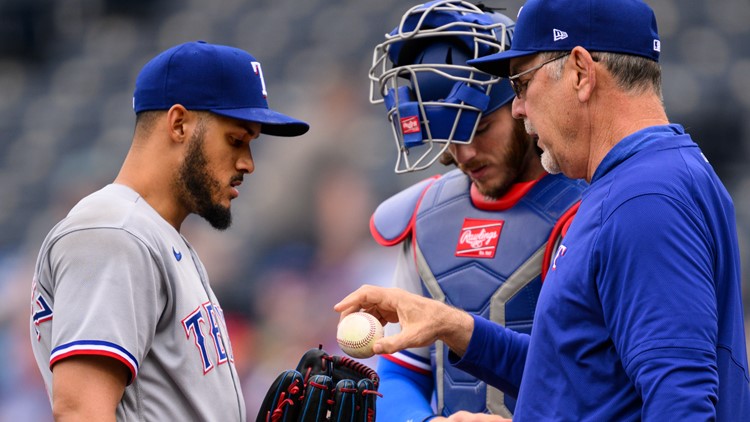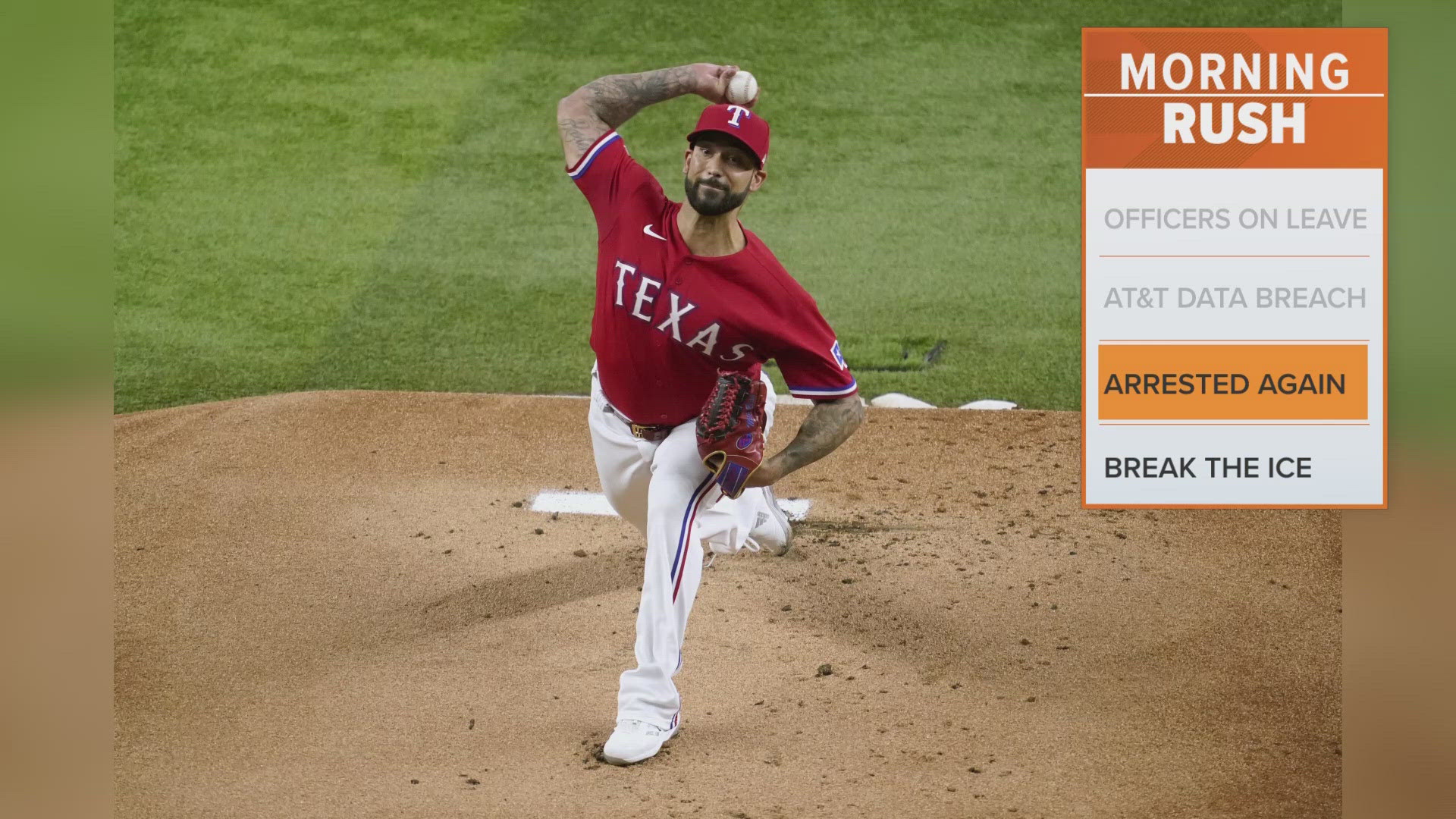ARLINGTON, Texas — Imagine, if you will, that the Texas Rangers are actually 35-14. They are owners of the best record in all of baseball by percentage points over the Tampa Bay Rays and have a commanding 7 game lead on the Houston Astros in the American League West, the largest in baseball, as the season nears a third of the way through the 2023 campaign.
In spite of a more modest 31-18 record, the above dream scenario very well should be the reality. Texas’ expected win/loss record is 35-14 based on an MLB best +112 run differential. But despite scoring 112 more runs than they’ve allowed, there’s been one glaring aspect that has held them from their good start being a great one.
If you’ve been following along, I’m sure you know that this means it’s time to talk about the bullpen. Whether it’s former closers, high-velocity throwers, or Triple-A standouts, the actual reality is that the Rangers’ bullpen has blown eight saves or holds, and those meltdowns have kept victories from the standings.
While it might seem silly to look this gift horse turnaround season in the mouth to find something to critique a team with baseball’s third best winning percentage, the bad things tend to get magnified when they’re the only bad thing about the team right now. And make no mistake, the bullpen has been costing the team wins.
Perhaps the more maddening tease of it all is that for the first three weeks of the season, the bullpen was actually humming along pretty good. In many ways, the performance of the bullpen helped the Rangers get to where they are today. Consider these numbers from the relievers through the first month of the season – including the bullpen turning point series in Cincinnati:
3.46 ERA, 96.1 innings, 1.132 WHIP, 6 HR, 36 BB, 104 Total Bases, Opponent slash line .207/.286/.296
It wasn’t perfect and, in addition to the disastrous games against the Reds, there were another handful of awful bullpen performances. Those, however, were few and far between in the first month of the season. In between those performances, there were much better outings from the bullpen, including the emergence of Dane Dunning as a multi-inning rotation-saver, Will Smith assuming the closer role, and Brock Burke continuing from his breakout 2022 season as a solid option.
Then May hit, and some cracks in the facade of the Rangers’ bullpen started to show themselves and then those cracks became craters. A little more than three weeks into May and here are those same stats for the bullpen:
7.21 ERA, 53.2 innings, 1.584 WHIP, 12 HR, 24 BB, 107 Total Bases, Opponent slash line .285/.366/.500
In an effort to quickly weed out some underperformers, the team made a couple of moves in the last half of April. First, they sent Taylor Hearn back to Triple-A. Hearn, the lefty from Royse City, had two scoreless outings, followed by two absolutely terrible outings. In those two outings, Hearn went 3 ⅔ innings and gave up eight runs. He also walked three and allowed nine hits.
Secondly, the designated veteran reliever Ian Kennedy for assignment. The 16-year pro was actually doing quite well in the month of April, save for one very bad outing in Houston. However, after a couple of outings this month where he gave up a run in each after mostly appearing in mop up duty, it was decided that he would be the next bullpen arm to go. The former closer Kennedy was designated to clear space for lefty reliever John King.
The problem now is that, while continuing to cut out ineffective arms from the bullpen would be a great idea, there are too many of them and not enough viable replacements to take a chance on. Setting aside Smith, who has become the defacto closer and has proven himself to be the Rangers’ most trustworthy reliever, here is a quick look at the current arms in the bullpen:
Joe Barlow, RHP – 2.2 innings, 6.75 ERA, 1.50 WHIP, Opponent’s Batting Average .273
Brock Burke, LHP – 19.1 innings, 3.72 ERA, 1.14 WHIP, Opponent’s Batting Average .243
Jonathan Hernandez, RHP – 17.2 innings, 6.62 ERA, 1.53 WHIP, Opponent’s Batting Average .269
John King, LHP – 3.1 innings, 2.70 ERA, 2.10 WHIP, Opponent’s Batting Average .438
Jose Leclerc, RHP – 14.1 innings, 3.77 ERA, 1.60 WHIP, Opponent’s Batting Average .231
Cole Ragans, RHP – 19.1 innings, 5.59 ERA, 1.40 WHIP, Opponent’s Batting Average .239
Josh Sborz, RHP – 16.0 innings, 5.06 ERA, 1.31 WHIP, Opponent’s Batting Average .230
When you’re not pitching typically for more than an inning, averaging more than one walk and hit per inning isn’t ideal, especially late in close games.
Fortunately for the Rangers, they have played the second fewest games with late and close situations as defined as a game where the batting team is leading by one run, tied or has the tying run on base in the 7th inning or later. Their pitchers’ stats in these situations aren’t great, however, as you may have gathered.
.256 opponent batting average, 1.75 WHIP (2nd worst in baseball), 7.03 walks per nine (worst in baseball).
With the trade deadline still two months away, other teams aren’t in a hurry to make any big moves involving their best trade chips. That means the Rangers, if they want to keep their standing atop the division, will have to pay a steep price for outside help or figure this out themselves. Where could the help come from?
Bring back Taylor Hearn – What? He of the 10+ ERA who had awful appearances just a few weeks ago? Since going back down to Triple-A Round Rock, something has clicked for Hearn.
In 11 games, Hearn has struck out 20 and walked just 8, spanning 17.2 innings, good for a 1.02 ERA. A season ago, after Hearn lost his job in the starting rotation, he pitched much better with an ERA of 3.51 in 41 innings of relief.
Start using Cole Ragans more – Ragans, a starter throughout his time in the minors, possibly isn’t accustomed to the nature of being a longman reliever. This season, Ragans’ usage has been incredibly sporadic. After six appearances of very solid relief, including an honorable 4-inning relief appearance against Houston, Ragans didn’t appear again until the series in Cincinnati after nine days of rest.
Ragans’ days of rest between appearances since then? 4, 6, 4, 2, 4. It may be time to stop going to Leclerc and Hernandez as much and give someone like Ragans a shot with some more routine work.
Check the DFAs – This might be replacing bad with bad, as pitchers who were let go are typically not good enough to stay on a big-league roster for a reason. But the recent list of possibilities include Wander Suero from the Dodgers (at one point a solid reliever for the Nationals), Silvino Bracho from the Reds (recently threw three scoreless outings, including multi-inning efforts), Zack Burdi from the Rays (former first round draft pick, but battling through multiple different injuries).
Barring smaller additions via trade, or a promising arm making their way to the waiver wire, the Rangers also have a few options in the minor leagues, including Chase Lee and Grant Anderson at Round Rock. But the truth of the matter is, the farm seems sparse in terms of relievers that are ready to come up and save Texas’ bacon.
More than likely, general manager Chris Young will have to get creative while manager Bruce Bochy and pitching coach Mike Maddux try to right the ship among the current group of relievers. It’s safe to say that they weren’t as good as they appeared in April but the hope is that they aren’t as bad as they’ve been in May.
There’s no silver bullet fix for the Rangers bullpen. The relief corps simply must figure things out and perform better or Texas could face the reality of missing out on something even greater than they’ve enjoyed so far in 2023.
Do you think the Rangers will be able to solve the bullpen puzzle? Share your thoughts with Matt on Twitter @FisherWritesMLB.



